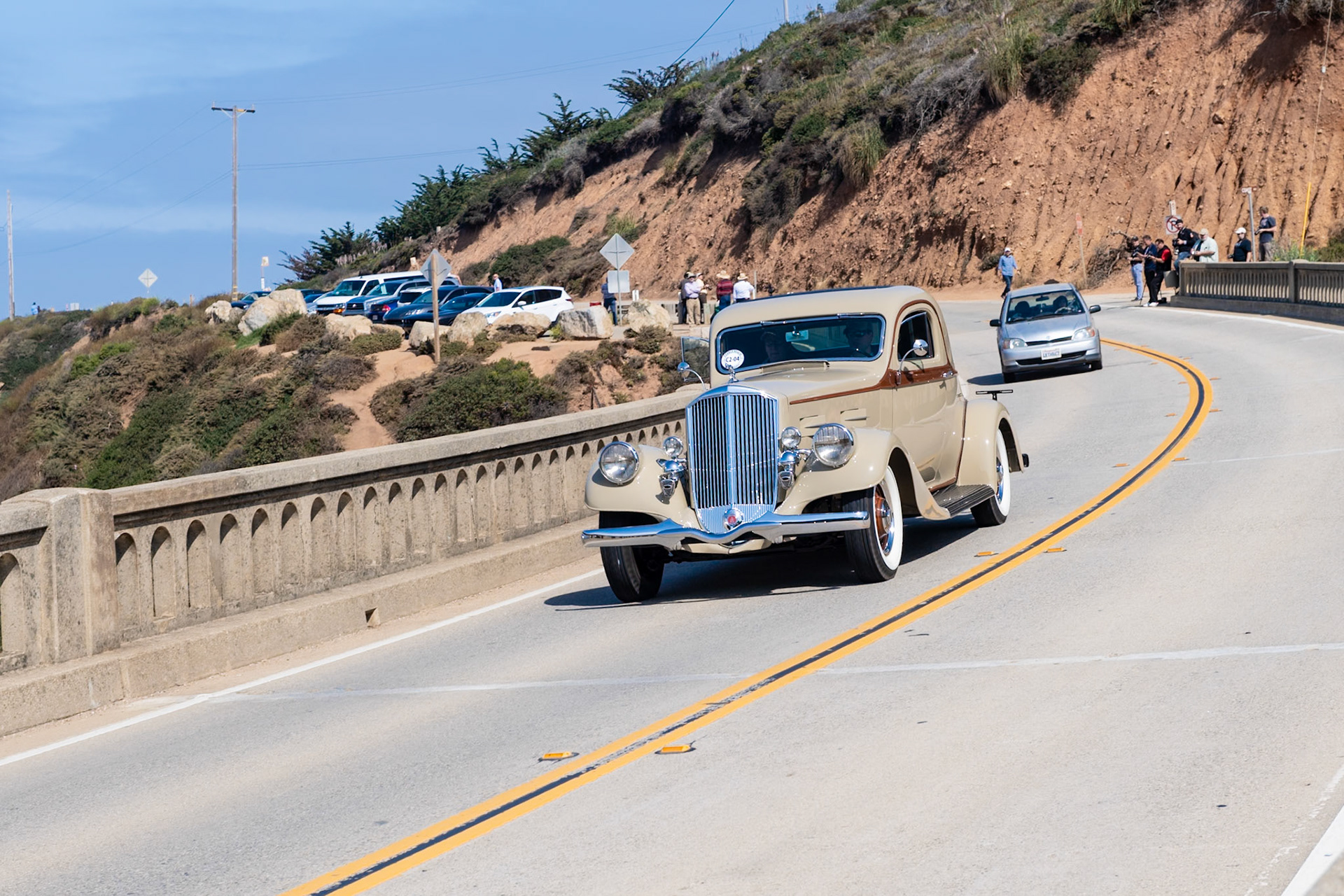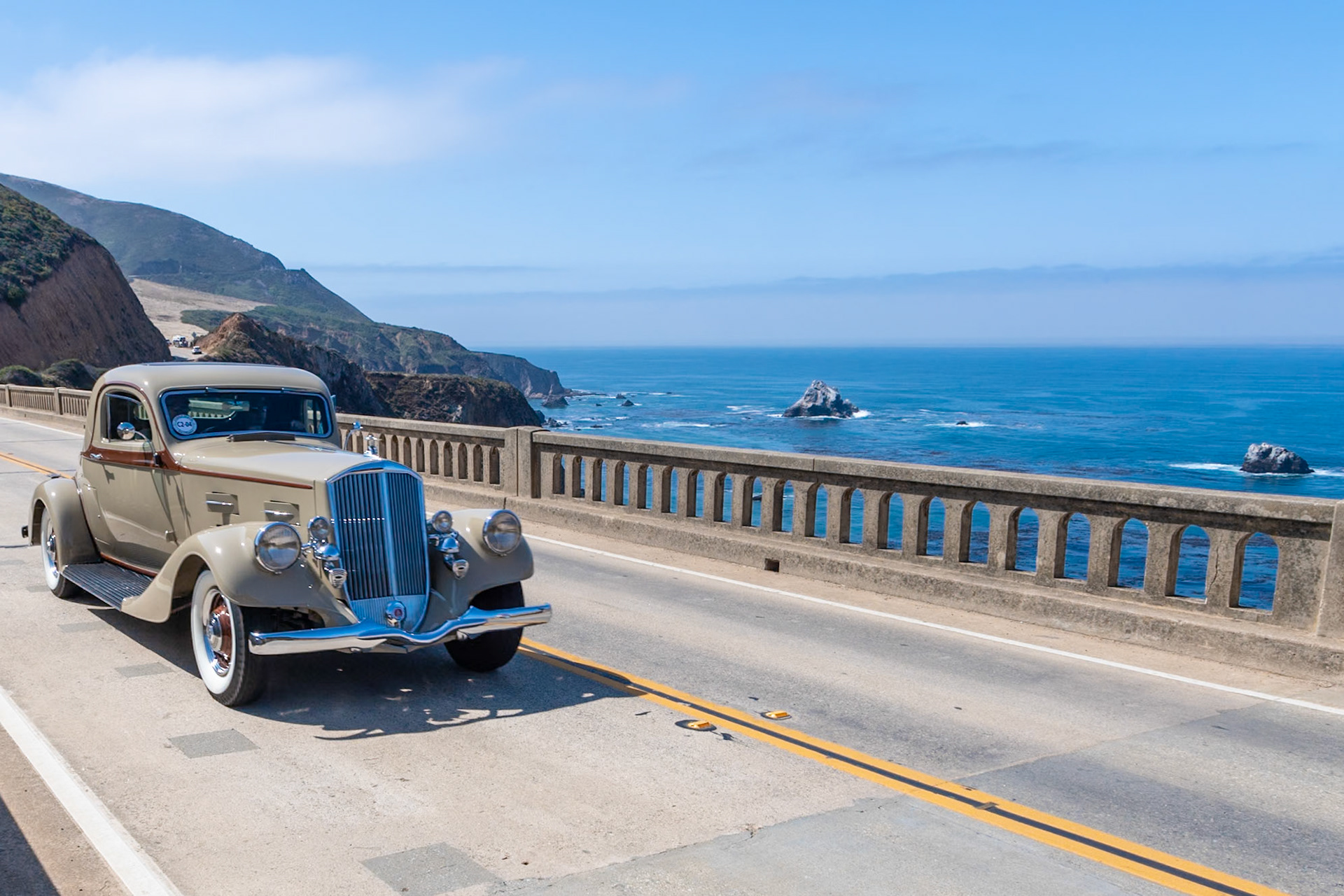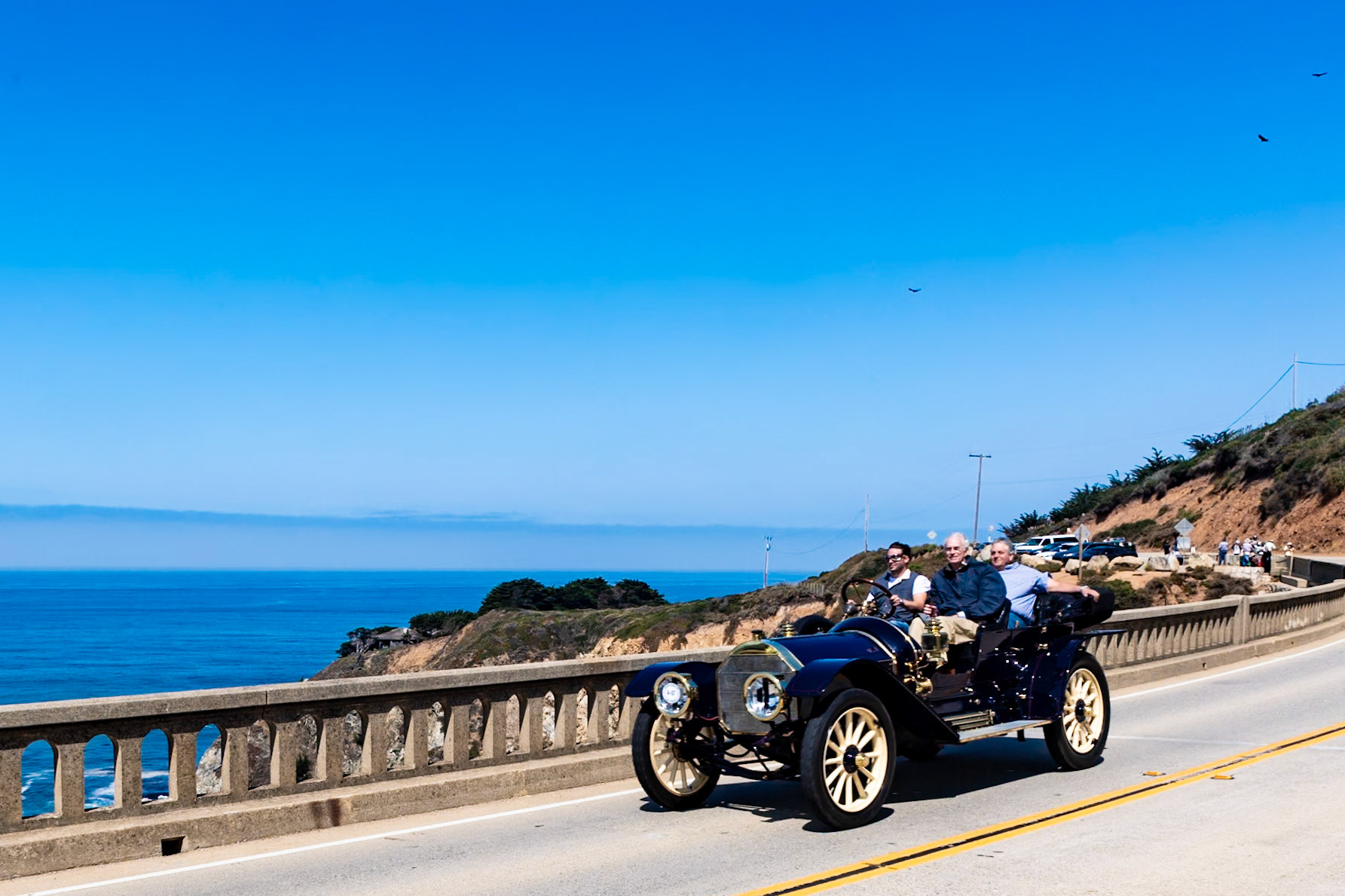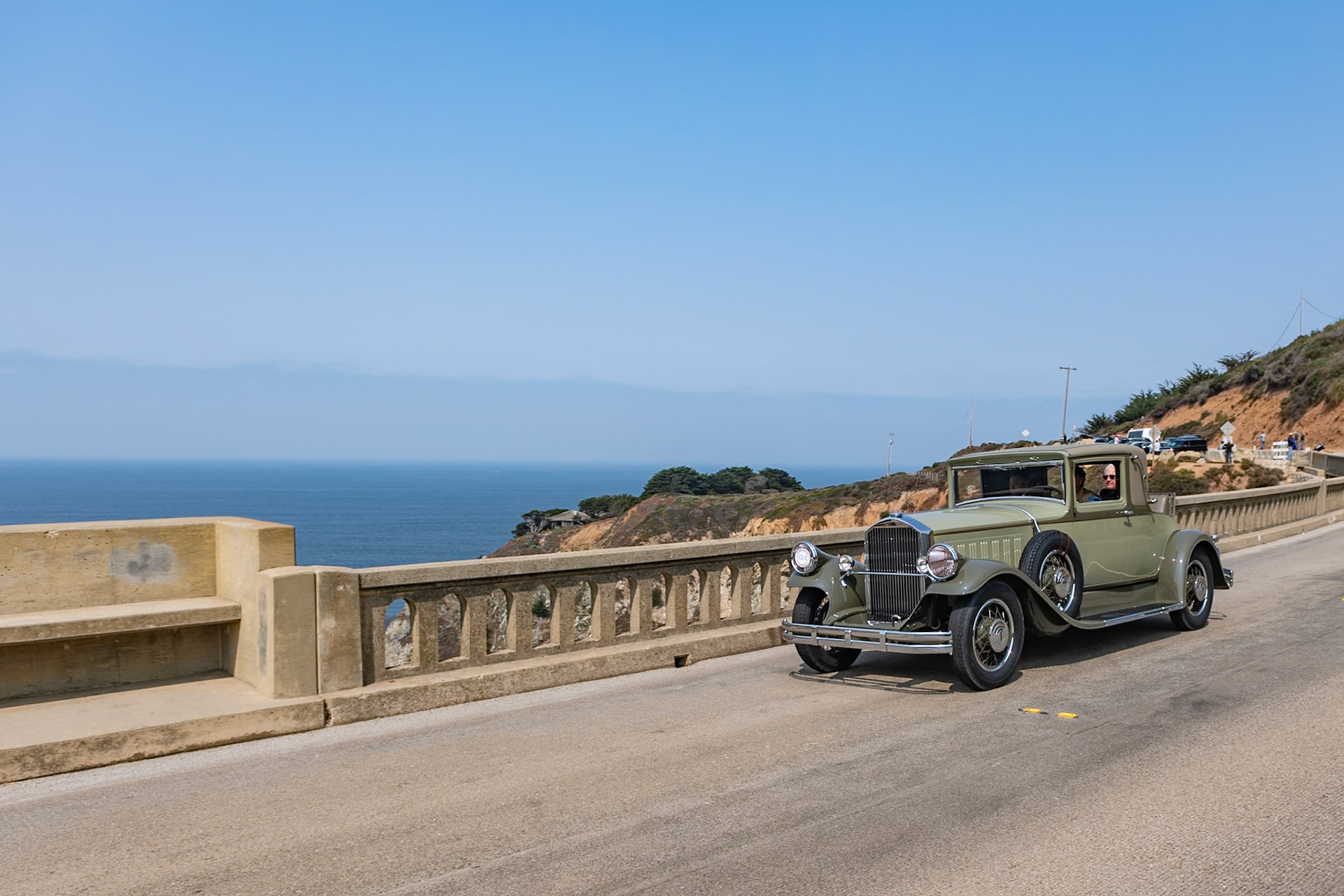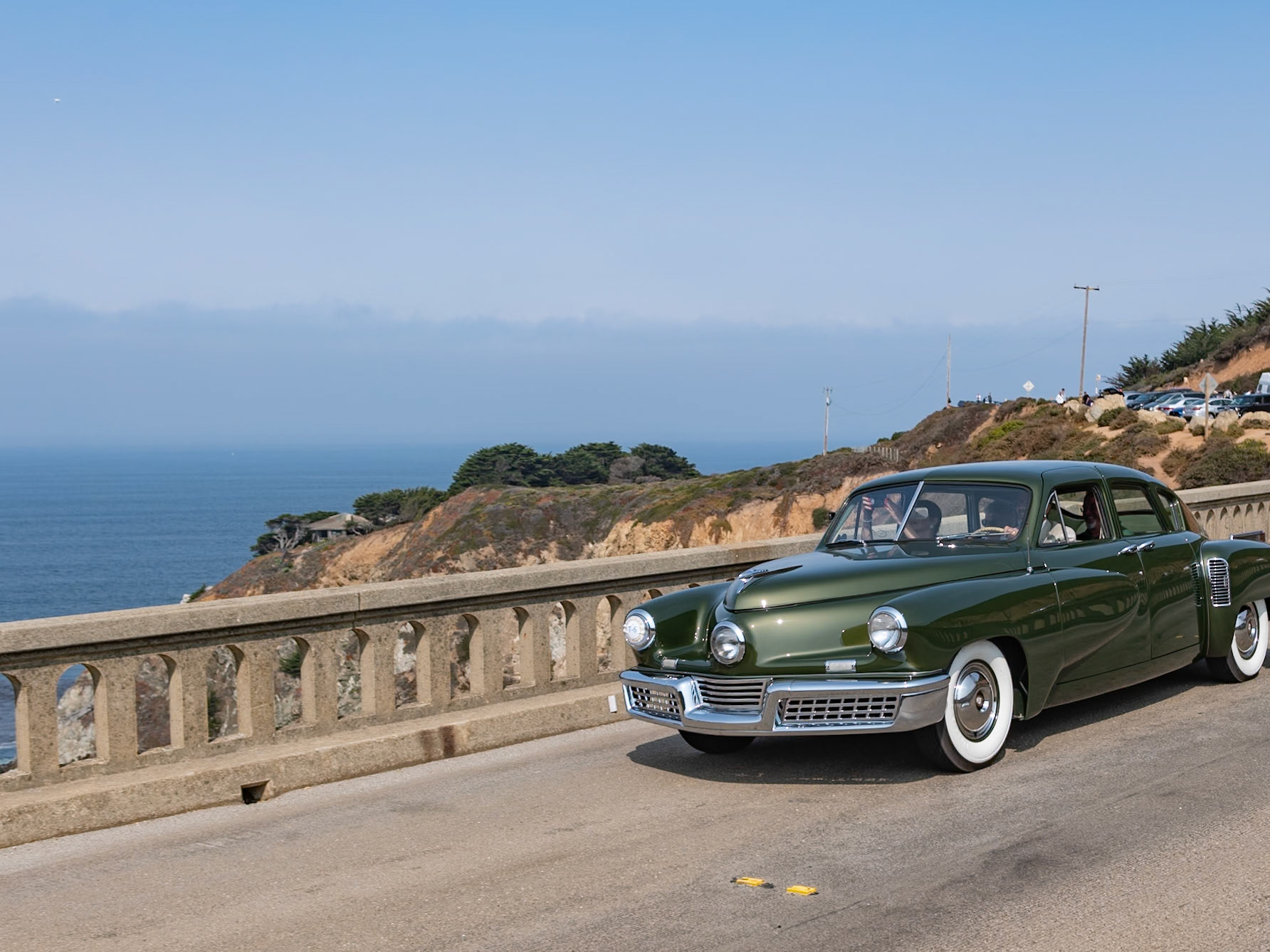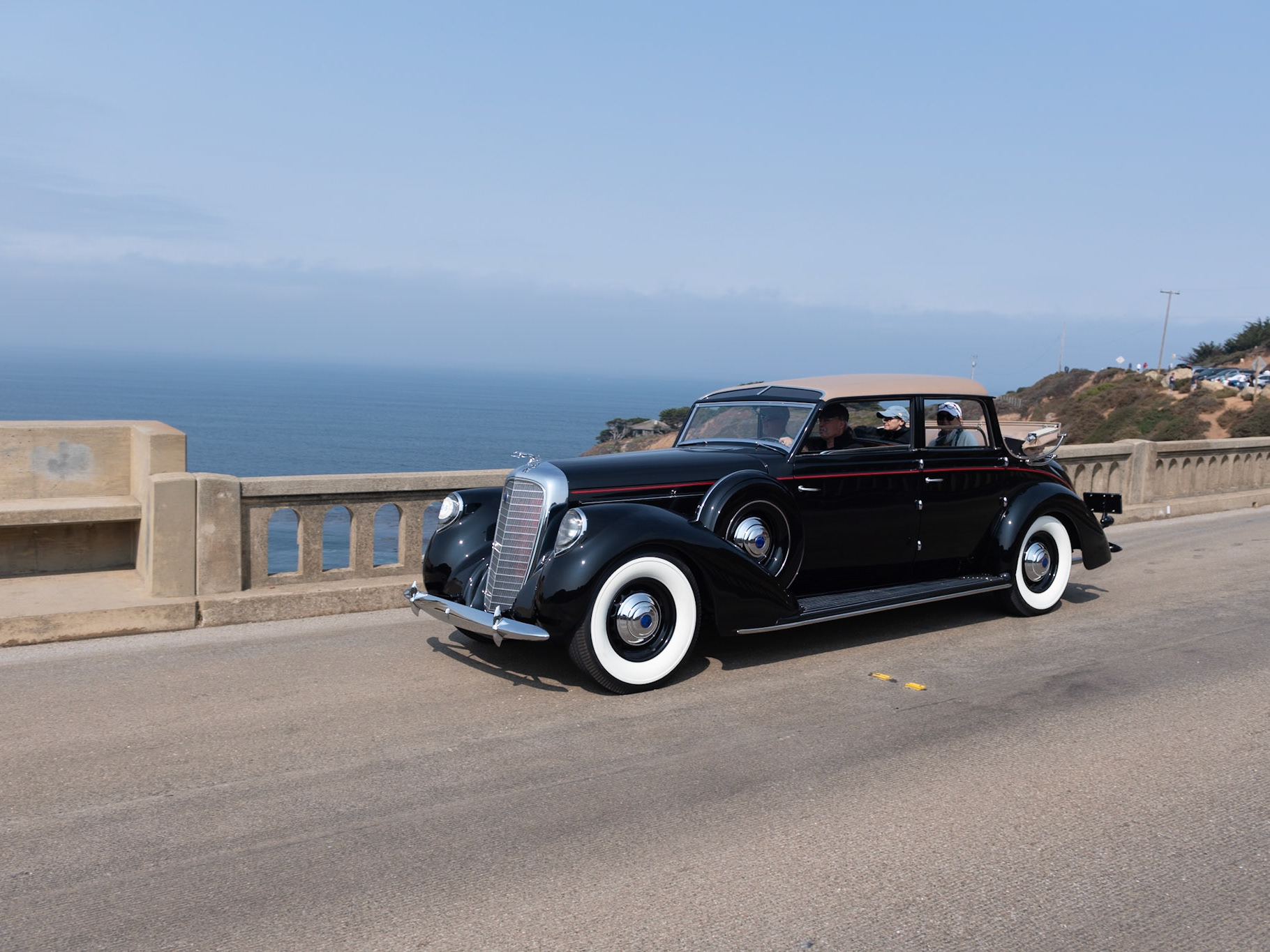
This elegant 1934 Pierce-Arrow is the last of 47 two-door 840A Coupes built and one of only seven known to still exist. It is powered by a 385-cubic-inch L-head straight 8-cylinder engine that produces 140 bhp. Ten body styles were available from the factory, ranging in price from $2,795 to $4,995. This handsome two-passenger coupe is built on Pierce-Arrow’s shorter 139-inch wheelbase and features the marque’s trademark wide-set Frenched headlights and raked radiator grille. The coupe has a golf bag compartment as well as a hidden rumble seat in its elegantly down-swept rear end finished by rear taillights that are also sculpted into the fenders. Although this car is well known on the East Coast, this is the first time it has been shown in the West.

This elegant 1934 Pierce-Arrow is the last of 47 two-door 840A Coupes built and one of only seven known to still exist. It is powered by a 385-cubic-inch L-head straight 8-cylinder engine that produces 140 bhp. Ten body styles were available from the factory, ranging in price from $2,795 to $4,995. This handsome two-passenger coupe is built on Pierce-Arrow’s shorter 139-inch wheelbase and features the marque’s trademark wide-set Frenched headlights and raked radiator grille. The coupe has a golf bag compartment as well as a hidden rumble seat in its elegantly down-swept rear end finished by rear taillights that are also sculpted into the fenders. Although this car is well known on the East Coast, this is the first time it has been shown in the West.

This elegant 1934 Pierce-Arrow is the last of 47 two-door 840A Coupes built and one of only seven known to still exist. It is powered by a 385-cubic-inch L-head straight 8-cylinder engine that produces 140 bhp. Ten body styles were available from the factory, ranging in price from $2,795 to $4,995. This handsome two-passenger coupe is built on Pierce-Arrow’s shorter 139-inch wheelbase and features the marque’s trademark wide-set Frenched headlights and raked radiator grille. The coupe has a golf bag compartment as well as a hidden rumble seat in its elegantly down-swept rear end finished by rear taillights that are also sculpted into the fenders. Although this car is well known on the East Coast, this is the first time it has been shown in the West.

The 48 was the longest-selling Pierce-Arrow model, produced from 1909 well into the 1920s. It is equipped with a 525-cubic-inch, 48 bhp, 6-cylinder engine mated to a 4-speed, sliding-gear transmission mounted onto a 134-inch wheelbase and bodied with Pierce-Arrow’s innovative cast aluminum coachwork. Built in Buffalo, New York, Pierce-Arrows were considered some of the highest quality and most refined American cars of the period. They were frequently the cars of choice for wealthy motorists, and were often bodied with formal, closed or large touring coachwork. This is the only known surviving 48-SS with the small, four-passenger Demi Tonneau body—a sporting choice for its first owner. This car has a very illustrious collector history and is the veteran of many tours.

In 1928, Pierce-Arrow merged with the Studebaker Corporation in 1928, saving it from bankruptcy, and for five years it was the fourth largest automotive conglomerate after GM, Ford and Chrysler. For 1929 Pierce-Arrow introduced the Models 133 and 143—so-named for the length in inches of their respective wheelbases. The L-head straight-8 engined cars boasted more modern styling while retaining the rather conservative look that customers expected. The majority of cars included the marque’s trademark fender-mounted headlights styled by Herbert Dawley. This Pierce-Arrow Model 133 Coupe was discovered by Ross Myers in a tobacco barn in Roanoke, Virginia, in 1970. Two years later Ross’s father, Allan C. Myers, brought it home to Pennsylvania where it underwent a complete rebuild. The car later passed to Ross, who has recently restored it and is sharing it here, fulfilling his father’s dream that the car might one day be shown at the Pebble Beach Concours d’Elegance.

In 1928, Pierce-Arrow merged with the Studebaker Corporation in 1928, saving it from bankruptcy, and for five years it was the fourth largest automotive conglomerate after GM, Ford and Chrysler. For 1929 Pierce-Arrow introduced the Models 133 and 143—so-named for the length in inches of their respective wheelbases. The L-head straight-8 engined cars boasted more modern styling while retaining the rather conservative look that customers expected. The majority of cars included the marque’s trademark fender-mounted headlights styled by Herbert Dawley. This Pierce-Arrow Model 133 Coupe was discovered by Ross Myers in a tobacco barn in Roanoke, Virginia, in 1970. Two years later Ross’s father, Allan C. Myers, brought it home to Pennsylvania where it underwent a complete rebuild. The car later passed to Ross, who has recently restored it and is sharing it here, fulfilling his father’s dream that the car might one day be shown at the Pebble Beach Concours d’Elegance.
